Save currants from aphids
- Biological characteristics of the pest.
- What damaged plants look like.
- How to treat currants against aphids.
- Proven folk remedies.
- Which insect will save currants from aphids.
- Video “Aphids on currants”
Aphids on currants are a fairly common phenomenon. It damages all types of bushes.Red gall aphids are more common on red and white ones, while leaf and shoot varieties are more common on black ones. Treatments are very effective in combating it, and, at the same time, it is quite difficult to fight aphids due to the high rate of their reproduction.
Classification of aphids
Several types of aphids attack currants:
- red gall aphid, found mainly on red and white currants;
- shoot aphids attack black, red and white currants;
- leaf aphids attack all species;
- flower aphids on currants are relatively rare.
All types of pests have wingless and winged forms.
Biological characteristics of the pest
Aphids parasitize plants, sucking sap from young shoots. Insects form colonies; The color of individuals most often corresponds to the plant on which they feed. Currants are parasitized by yellowish-green aphids, however, pests with black integuments may also appear. The body of the aphid is translucent, very delicate, measuring 1.1-1.8 mm.
Eggs overwinter, laid on the bark of young shoots next to the buds. The eggs are spindle-shaped and black in color and are easy to see.
In the spring, larvae emerge from them, feeding on the juice of young leaves and shoots. After the larvae molt, adult wingless individuals emerge and continue to feed on currants. This generation of pest reproduces asexually (parthenogenesis). A colony of aphids on currants can reach several tens of thousands of individuals. Aphids reproduce rapidly: the founding female lays hundreds of eggs. Within 7-10 days, new individuals appear and also lay hundreds of eggs.
By mid-summer, when lignification of young shoots begins, the pest produces a generation of winged females that fly to herbaceous plants.The winged generation can also appear when the colony has grown too large and there is not enough food supply. Winged aphids travel very long distances.
Having settled on herbaceous plants, the pest feeds on them until the end of summer. Several wingless generations are born here again. At the beginning of autumn, winged males and females appear, and the process of sexual reproduction occurs. The rate of this reproduction, compared to parthenogenesis, is very small, but it is these offspring that survive the winter and begin a new development cycle.
In the fall, the female founders return to the currants and lay eggs on the young growth. During a season, 10-20 generations of pests may appear. High migratory ability and reproduction rate make it very difficult to control aphids.
Damage to currants caused by red gall aphids
Mainly attacks red and white currants. It affects young leaves located at the tops of annual growth.
Insect colonies appear on the undersides of leaves and suck the juices from them. As a result, numerous red swellings (galls) appear on the upper side. At the bottom of the leaf, depressions appear in which colonies of aphids sit. When the insects suck all the juices out of the leaf, it curls up and dries out, and the colony moves to a new leaf.
Red gall aphids should not be confused with gall midges, which cause similar damage to currant leaves. These are different types of insects. The red gall aphid infects the tops of shoots and young leaves; the gall midge settles in the lower part of the bush. The red gall aphid attacks mainly red and white currants; the gall midge prefers black ones.
Nature of damage to shoot and leaf aphids
These pests attack all types of currants; they are not particularly selective. In addition to it, insects can attack all garden trees, shrubs, vegetables and flowers.
On currants, growing annual shoots and young leaves on their tops are damaged. Aphid colonies always appear on the underside of leaves. The leaves curl into a ball, inside which insects sit, feeding on their juice. As the shoots grow, the lumps remain in the middle of the branch, but the colony can move higher to the newly growing leaves, then they all turn into lumps along the branch. In mid-summer, insects leave the currants and the formation of lumps stops. Damaged leaves may fade slightly and turn yellowish-green, but they never fall off.
When the shoots are damaged, they become bent and thin, and numerous small punctures are noticeable in the areas of damage. As a result, young growth develops poorly, the wood does not have time to ripen before the cold weather and freezes in winter.
If seedlings and young bushes are severely damaged by aphids, if control measures are not taken, the plants dry out and die.
How to deal with aphids
The fight must be carried out systematically throughout the season. It is impossible to completely destroy aphids with one treatment. All treatments must be carried out on the underside of the leaves, since this is where insect colonies are located. Processing currants on top is completely useless. Control measures are at the same time preventive measures, protecting currants from aphid attacks.
At least 4 treatments are carried out per season. The fight against red gall and common aphids of all types is carried out using the same means.
Treatment of currants with chemicals.
- If the bushes are not seriously affected and the colony is small, use Biokill or Fitoverm biological products. These biopesticides are safe, do not accumulate in berries, and can be used 3 days before harvest. The period of protective action is highly dependent on the weather and ranges from 7-20 days. If good results are obtained, treatments are carried out at intervals of 10-15 days throughout the growing season.
- When there are a large number of aphids, broad-spectrum insecticides are used for control - Actellik, Karbofos, Inta-Vir, Karate, Kinmiks. The drugs are used no later than 20 days before harvest.
Chemical means of controlling aphids are very effective, but due to the high reproduction rate, insects appear on currants again and again. Therefore, spraying is carried out throughout the season. Preventative treatments should not be done, since insects may not arrive, and treating bushes against other pests is in itself a good preventive measure.
Folk remedies to combat aphids
Folk remedies for fighting aphids are very effective. Often, if there are not so many insects yet, you can get by only with them. The essence of folk remedies is to treat currants with compounds containing burning and irritating substances. The integument of aphids is very soft and delicate; it is extremely sensitive to such active substances. They cause damage to the integument of insects and lead to their death.
Currant processing.
- Prepare a strong burgundy solution of potassium permanganate, in which dilute 3 tbsp. spoons of urea. Spray currants on the leaves from the underside.
- Spraying the bushes with a solution of soda ash or baking soda (3 tablespoons per 10 liters of water).
- Treatment with onion peel infusion.200 g of husks are poured into 2 liters of water and left for 24 hours. The resulting concentrate is filtered, diluted in 5-7 liters of water and processed. Instead of onion peels, you can prepare an infusion of garlic.
- Treating bushes with infusion of tomato tops, tansy, or mustard.
- Elderberry infusion. 100 g of raw materials are infused in 1 liter of water for 24 hours. Then filter, bring the volume to 10 liters and spray the bushes.
- Infusion of tobacco dust. 150-200 g of raw material is poured into 2 liters of water and infused for 48 hours. Bring the volume of the working solution to 10 liters and carry out the treatment.
- You can simply wash the tops of the shoots with the same products. To all of the above products, it is necessary to add soap as an adhesive (40 g solid or 50 ml liquid), otherwise the drug will drain from the leaves and will not have any effect on insects. In rainy weather, spraying is done every 4-5 days, in dry weather - once every 10 days. But here it is necessary to look at how quickly the pest multiplies and adjust the timing.
- On black currants, the tops of shoots with clumps of leaves are removed. This cannot be done on red and white currants. Here you will have to wage a stubborn fight against the pest, alternating chemical and folk remedies.
- A good way to combat aphids is to attract their natural enemies - predatory bugs, lacewings and, of course, ladybugs.
Ladybugs and their larvae feed on aphids. Ladybug larvae look like small worms with spots on the sides. Often gardeners mistake them for pests and destroy them. You need to learn to recognize these helpers.
Ladybugs are helpers in the fight against aphids
Ladybug eggs are elongated oval, yellow. Females lay them on those plants that are most often affected by aphids, so that future offspring have a food supply.
The larvae are initially small, about 1 mm long, very scary in appearance, similar to monsters from the insect world. As they grow, they molt 3 times and by the end of the larval stage reach a length of up to 1 cm.
The body of the larva is segmented, dirty gray or black with a blue tint. Hairs grow on segments of the body that look like thorns. On the back there are orange spots with spiky outgrowths symmetrically located.
When you see them, you feel a feeling of disgust (this happened in my garden!) and a desire to immediately destroy them. There is no need to rush; with a large number of ladybird larvae, the fight against aphids comes down to not interfering with their feeding.
Ladybug larvae are very agile and extremely voracious. In search of food, they can climb the bushes to the very tops and eat up to 300 aphids per day. When threatened, the aphid releases a special aromatic substance that warns the colony of attacks by predators. Winged individuals fly away, while wingless ones become prey for larvae.
The growth rate of ladybug larvae depends on a sufficient amount of food. The more it is, the faster the transformation occurs.
It is necessary to thoroughly study the signs of ladybug larvae. If the bushes are treated, both the helpers and the pests will die, but aphids will appear again, but ladybugs are unlikely, since their development cycle is much longer.
Ladybugs themselves also feed on aphids. They are no less voracious than their larvae. Thus, ladybugs simply save currants from aphids.
Prevention of aphid attacks
The pest's biggest friends are ants. They graze aphids, collect their sweet secretions and transport the insects to a new place.Therefore, aphid control includes removing all ants from the garden.
It is necessary to mow the weeds around the perimeter of the site, since pests can also parasitize them.
But basically, prevention does not give the desired effect, since the winged female can fly from anywhere and at any time. The most effective prevention is timely control of aphids.
Video “Aphids on currants”
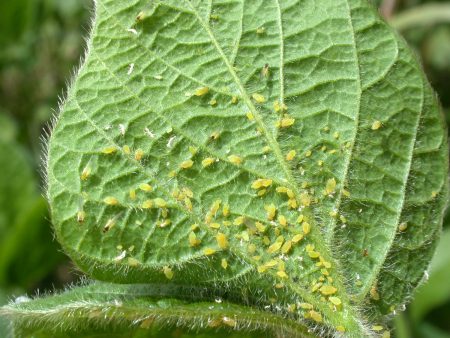
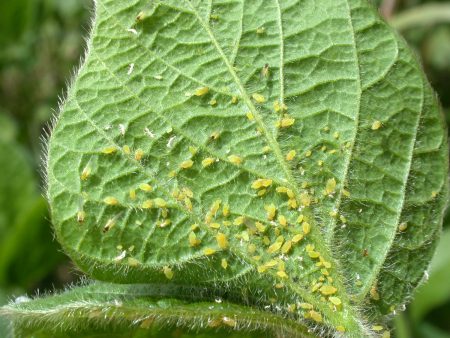
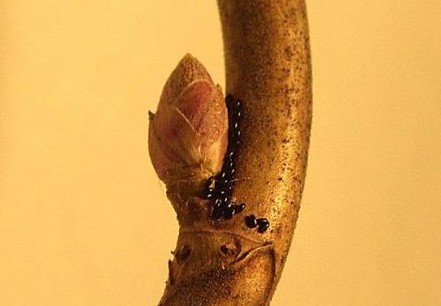
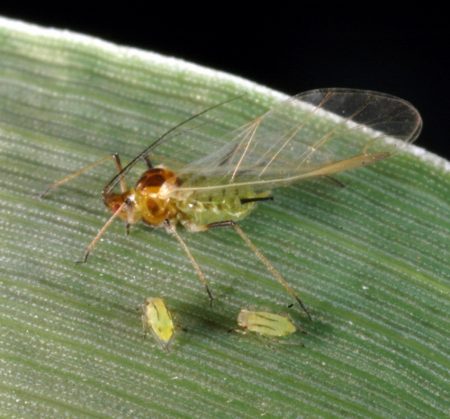
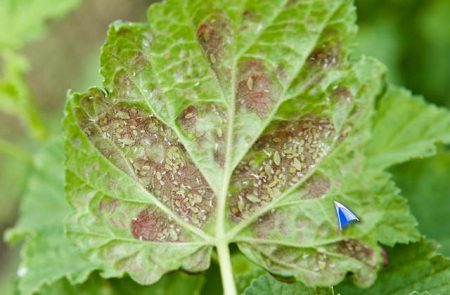
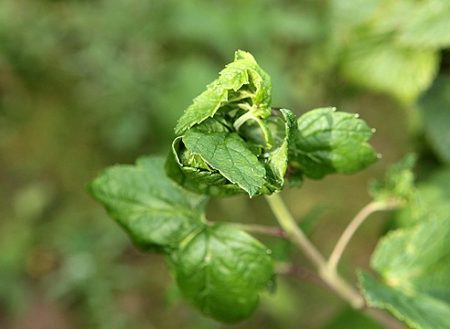
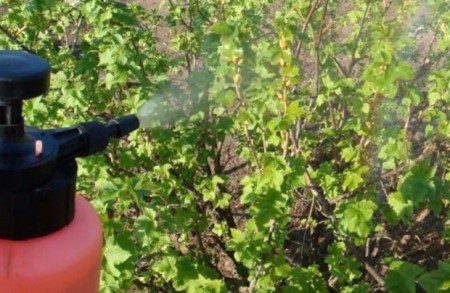
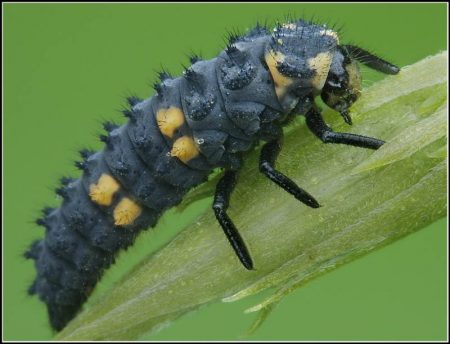
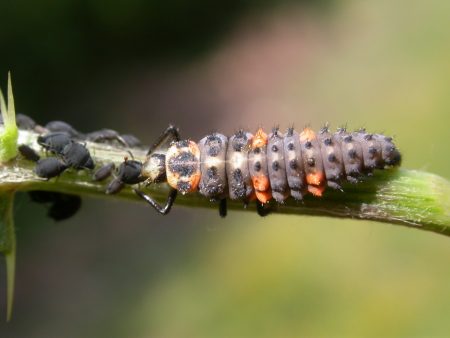

 CUCUMBERS NEVER GET SICK, I'VE BEEN USING ONLY THIS FOR 40 YEARS! I SHARE A SECRET WITH YOU, CUCUMBERS ARE LIKE THE PICTURE!
CUCUMBERS NEVER GET SICK, I'VE BEEN USING ONLY THIS FOR 40 YEARS! I SHARE A SECRET WITH YOU, CUCUMBERS ARE LIKE THE PICTURE! You can dig a bucket of potatoes from each bush. Do you think these are fairy tales? Watch the video
You can dig a bucket of potatoes from each bush. Do you think these are fairy tales? Watch the video
 How our fellow gardeners work in Korea. There is a lot to learn and just fun to watch.
How our fellow gardeners work in Korea. There is a lot to learn and just fun to watch. Eye trainer. The author claims that with daily viewing, vision is restored. They don't charge money for views.
Eye trainer. The author claims that with daily viewing, vision is restored. They don't charge money for views. A 3-ingredient cake recipe in 30 minutes is better than Napoleon. Simple and very tasty.
A 3-ingredient cake recipe in 30 minutes is better than Napoleon. Simple and very tasty. Therapeutic exercises for cervical osteochondrosis. A complete set of exercises.
Therapeutic exercises for cervical osteochondrosis. A complete set of exercises. Which indoor plants match your zodiac sign?
Which indoor plants match your zodiac sign? What about them? Excursion to German dachas.
What about them? Excursion to German dachas.